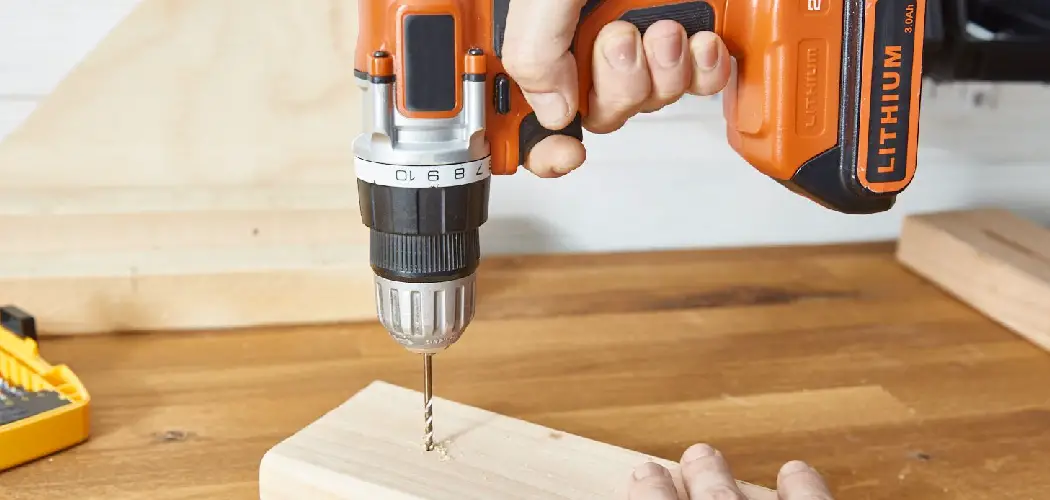Are you looking to drill a deep hole in wood? Whether you need to make a pilot hole before driving a screw or want to create a recess for a hinge, drilling a deep hole can be tricky. However, it’s easy to achieve the desired results with the right tools and techniques.
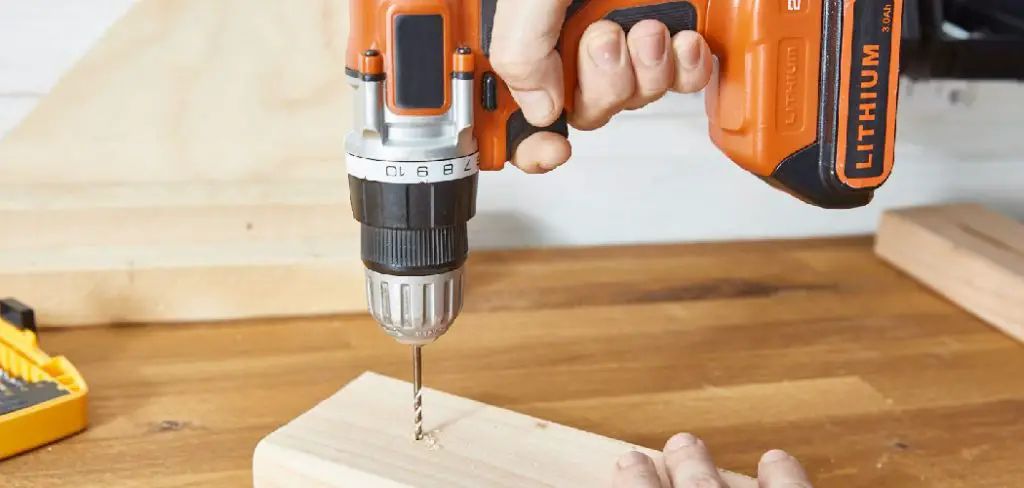
In this blog post, we’ll discuss how to drill a deep hole in wood using power and hand drills. We’ll also provide some tips for avoiding common mistakes. So whether you’re a seasoned pro or just starting, read on for all the information you need about drilling deep holes in wood.
Summary: This article will show you how to drill a deep hole in wood with a handheld drill. This is a great way to create a hole for a screw or nail, or to access a screw or nail that is buried deep in the wood.
When Should You Drill a Deep Hole in Wood?
There are certain situations where you need to drill a deep hole in wood. For example, maybe you’re mounting a heavy object on a wall and need to sink several screws into the studs to ensure it’s secure. Or maybe you’re drilling through a thicker piece of lumber and need to go all the way through. Either way, you need to know how to drill a deep hole in wood.
10 Effective Ways on How to Drill a Deep Hole in Wood
1. Use the Right Drill Bit:
One of the most important things to consider when drilling a deep hole is the drill bit you’ll need. For wood, spade bits or auger bits are ideal choices. These bits have large flutes that allow for quick removal of wood chips, which is essential when drilling deep holes. Make sure the drill bit is slightly larger than the screw or dowel you’re using.
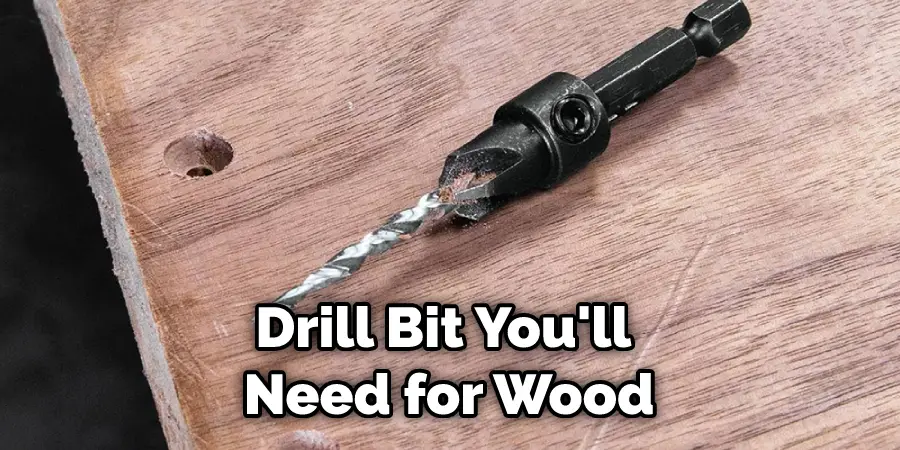
2. Clamp the Workpiece:
When drilling a deep hole, it’s important to secure the workpiece so it doesn’t move or spin. This will help prevent the drill bit from slipping and damaging the wood. A simple way to do this is to clamp the wood to a work surface or use a hand drill with an integrated vice. If you’re working with a large piece of wood, you may need multiple clamps to keep it secure.
You Can Check It Out To Make a Hole in Resin Without a Drill
3. Use a Pilot Hole:
If you’re drilling a deep hole for a screw, it’s always best to first start with a smaller pilot hole. This will help to prevent the wood from splitting when you drive in the screw. To drill a pilot hole, use a drill bit slightly smaller than the screw you’re using. When using the drill bit, apply steady pressure and go slowly to avoid damaging the wood.
4. Use a Drill Press:
If you have access to a drill press, it’s always best to use this tool when drilling deep holes. A drill press will allow you to apply consistent pressure and ensure that the hole is drilled perfectly straight. Make sure the drill bit is slightly larger than the screw or dowel you’re using.
5. Use a Forstner Bit:
Forstner bits are ideal for drilling deep, clean holes in wood. These bits have a center point and cutting lips that cut cleanly into the wood, leaving a smooth, flat bottomed hole. Forstner bits are available in various sizes and can be used in a hand-held drill or drill press. First, clamp the workpiece to a stable surface using a Forstner bit.
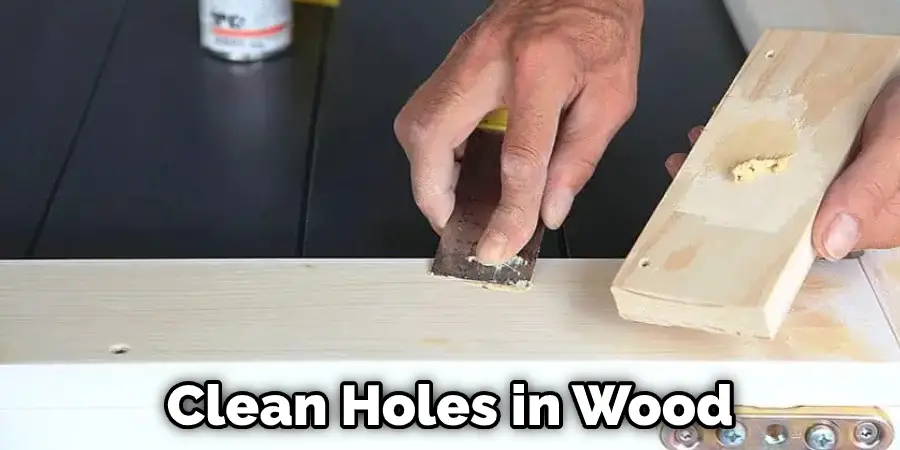
Drill a pilot hole slightly smaller than the bit’s diameter using a standard twist bit. If you’re using a drill press, center the bit over the pilot hole and lower it into the workpiece. If you’re using a hand-held drill, hold the bit steady as you start drilling. Apply gentle pressure to keep the bit cutting and avoid breaking it. Drill slowly and steadily until the bit breaks through to the other side of the workpiece.
6. Set Your Drill to the Correct Speed:
When drilling a deep hole, setting your drill to the correct speed is important. If the drill is set too high, the bit can overheat and damage the wood. If the drill is set too low, the bit will dull quickly. The best way to determine the correct speed is to experiment on a scrap piece of wood first.
Take a piece of wood that is the same thickness as the piece you’ll be drilling into and set your drill to a medium speed. Slowly lower the bit into the wood, applying gentle pressure. Turn the drill down to a lower speed if the bit starts to smoke or burn the wood. If the bit isn’t cutting through the wood quickly enough, turn the drill up to a higher speed.
7. Support the Wood While You Drill:
When drilling a deep hole, it’s important to support the wood so it doesn’t split or crack. This is especially important when drilling into end grain. To support the wood, clamp a piece of scrap wood to the back of the workpiece. This will help to prevent the wood from splitting as you drill. Make sure that the scrap wood is the same thickness as the workpiece. If the scrap wood is too thin, it may not provide adequate support.
8. Keep the Bit Cool:
To prevent the bit from overheating, keep it cool by regularly dipping it in water. This will help prolong the bit’s life and prevent it from burning up the wood. If the drill bit is getting too hot, then take a break and let it cool down before continuing. Be sure to keep plenty of water on hand so that you can dip the bit as needed.
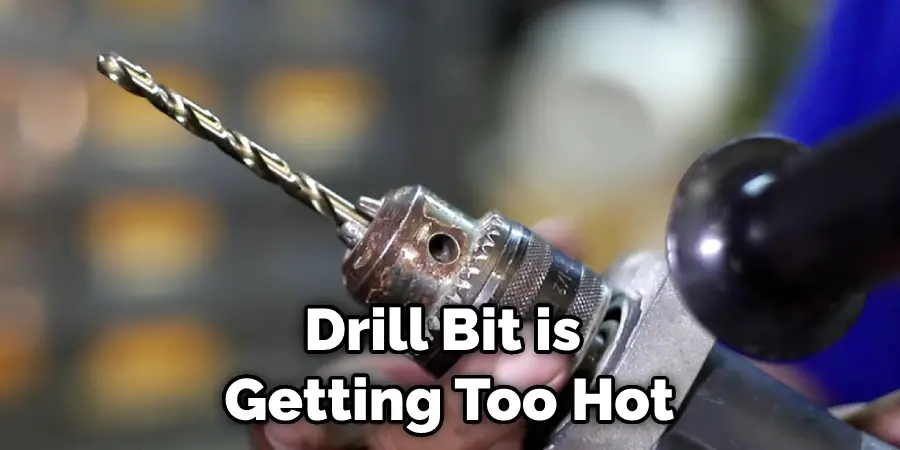
9. Use a Lubricant:
You can also keep the drill bit cool using a lubricant such as WD-40 or mineral oil. This will help to reduce friction and heat build-up. Apply the lubricant to the drill bit before beginning to drill. When applying the lubricant, ensure you do not get any on the wood itself, as this could cause the wood to become slippery and difficult to work with. If the drill bit does get too hot, it is important to stop drilling and allow the bit to cool down before continuing.
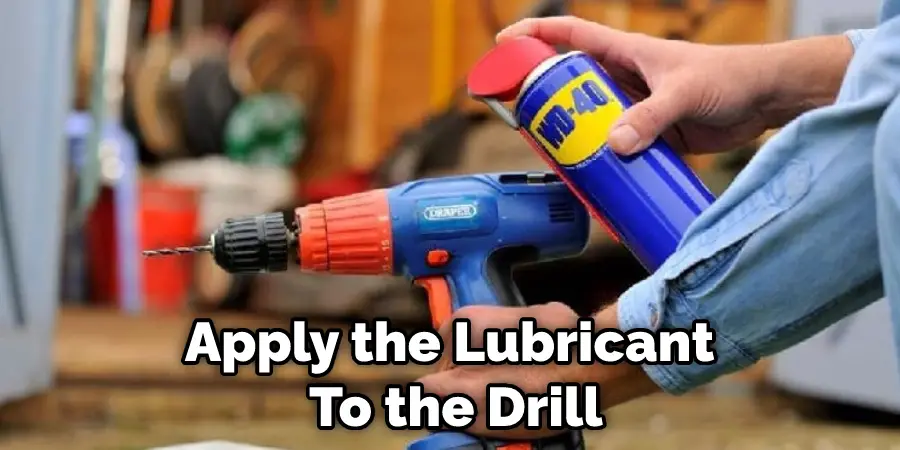
10. Withdraw the Drill Bit Periodically:
To prevent the bit from overheating, it’s important to periodically withdraw it from the hole. This will help to dissipate heat and prevent damage to the wood. Withdraw the bit every few seconds, and then resume drilling. If the bit is getting too hot, stop drilling and allow it to cool for a few minutes before continuing. Thus, it will help you drill a deep hole without any problem.
You Can Check It Out To Organize Drill Bits
Some Helpful Tips and Suggestions
- Always use a sharp bit. A dull bit will cause the drill to work harder and can overheat, damage the wood, and cause the hole to be misshapen.
- When drilling into end grain, it’s essential to support the wood so it doesn’t split or crack. Clamp a piece of scrap wood to the back side or use a backstop.
- Use a slower speed when drilling through hardwoods. If the bit overheats, it can cause the wood to burn.
- When drilling a deep hole, it’s important to withdraw the drill bit to clear out the shavings periodically. Otherwise, the shavings can become compacted and cause the drill to bind.
- If the hole is for a screw, it’s helpful first to drill a pilot hole with a smaller bit. This will prevent the wood from splitting when you drive in the screw.
- To avoid tear-out, use a brad point or Forstner bit. These bits have cutting spurs that score the edges of the hole, preventing the wood from splitting.
- When drilling through the veneer, it’s important to go slowly to avoid burning or tearing the thin layer of wood. Also, use a backer board under the veneer to prevent tear-out.
- If your drill doesn’t have a built-in depth stop, you can create one by wrapping a piece of tape around the bit at the desired depth.
You Can Check It Out To Drill Holes in Balsa Wood
How Do You Drill a Deep Hole With a Drill Press?
A drill press is the best tool for the job if you’re looking to drill a deep hole. A drill press will allow you to drill a perfectly straight hole, and it’s easy to adjust the depth of the hole. Plus, with a drill press, you can apply more pressure than you could with a hand-held drill, making it easier to drill a deep hole.
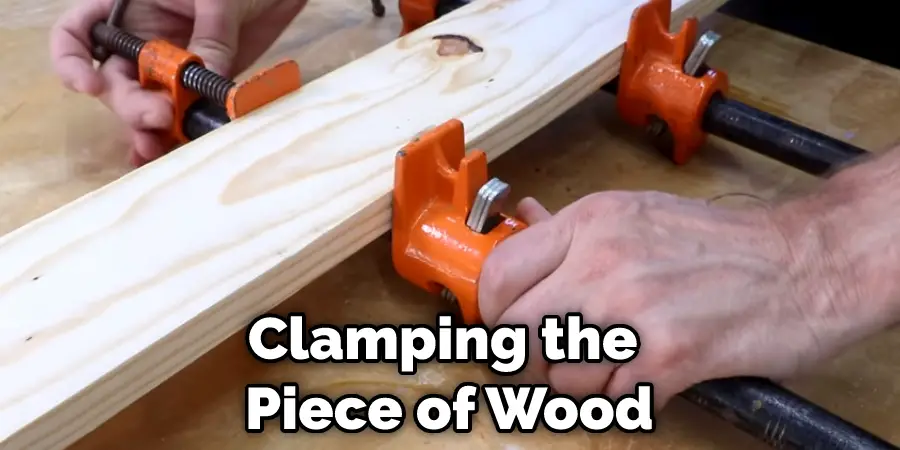
To drill a deep hole with a drill press, start by clamping the piece of wood you’re drilling into the drill press table. Then, use a bit slightly larger than the diameter of the hole you’re trying to create. For example, if drilling a 1-inch hole, use a 1-1/4-inch bit.
Next, lower the drill bit until it’s just touching the surface of the wood. Then, start the drill press and slowly raise the drill bit until it’s at the desired depth. Finally, apply pressure to the drill press handle and drill straight down into the wood. Keep the drill bit lubricated with oil or water to prevent it from overheating.
How Do You Drill a Straight Hole in Thick Wood?
Drilling a straight hole in thick wood can be challenging, especially for novice DIYers. You need to use the appropriate tools and techniques to do it correctly. First, make sure you have the right drill bit for the job — ideally, choose a bit slightly narrower than your hole’s final diameter to ensure a clean cut.
Next, mark the spot where you’d like to drill with a pencil. Then, use a hammer and center punch to make an indentation in the wood — this will help keep your drill bit from slipping as you work.
Finally, use a low-speed setting on your drill and push down firmly as you move the bit in a steady motion. If you feel any resistance, pause and back the bit up slightly to prevent it from seizing up. With these tips and the right tools, you can easily drill a deep hole into thick wood.
What is the Best Drill Bit for Large Hole in Wood?
When drilling a deep hole in wood, it is important to use the best drill bit for the job. For larger holes, the best choice is a Forstner bit. These drill bits are designed with a flat bottom and concentric cutting edges that can produce smooth and even holes in wood.
The cutting edges on these bits also stay sharp longer than standard spade or twist drills, meaning the deep hole can be made quickly and efficiently.
When using a Forstner bit to drill a deep hole in wood, it is important to use a drill press with adjustable speed settings. This will help prevent overheating and burning of the wood as the bit cuts through. Additionally, a lubricant such as wax or oil can be used to reduce friction and extend the life of your drill bit.
Conclusion
In this post, we’ve shown you how to drill a deep hole in wood. This is a skill that can come in handy for many different projects, from home improvement tasks to carpentry work. First, ensure your work area is clear, and you have a stable surface to work on. Next, use the spade bit to create a pilot hole in the center of the piece of wood that you want to drill into. Finally, apply drilling oil or wax to the spade bit before drilling.
Drill at a slow speed and apply pressure evenly as you go. Make sure to keep your hands and fingers clear of the moving drill bit. Once you reach the desired depth, release pressure on the drill and slowly withdraw the bit from the hole. Wipe away any excess oil or wax before continuing with your project. Thanks for reading! We hope this post has been helpful.

